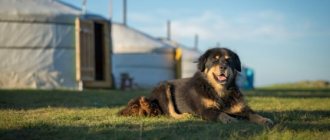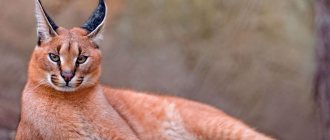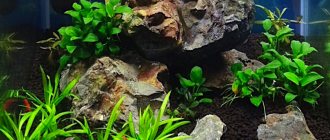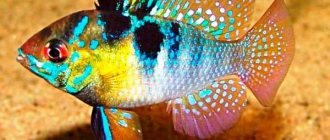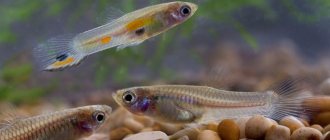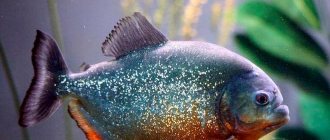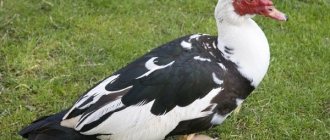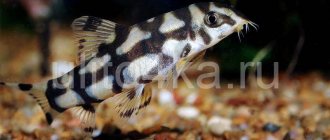The gerbil is a small animal from the order of rodents. There are many varieties of these animals, but only one of them is suitable for keeping at home. Small animals captivate with their friendliness, cleanliness and unpretentiousness.
Getting to know them will help you find out how gerbils live, what they eat in the wild, and what conditions need to be created for such pets at home.
Description and appearance of the gerbil
These are rodents from the Mouse family. There are more than 10 genera and 100 species. The differences within each genus are minor. The animals differ from each other in body size, tail length, color, the presence or absence of fur on their paws and the length of their toes.
These are small animals weighing from 10 to 220 g. Body sizes differ among representatives of different species. The largest rodent belongs to the Indian variety. Such gerbils reach a length of 18-24 cm, while dwarf gerbils amaze with their tiny size - about 5.5-7 cm.
The rodent's tail is usually longer than the body and covered with soft, sparse hairs. In many species it is equipped with a fluffy tassel at the end. Most gerbils have an elongated, pointed muzzle, while some have a blunt muzzle. The rodent's eyes are quite large, convex, and dark in color. Ears can be either long or short.
This rodent has well-developed hind limbs, they are much longer than the front ones. This physiological feature helps to move quickly when a threat arises. Some varieties have bare paws, while others have sparse fur. The rodent's fingers have claws.
Most gerbils have short, coarse fur. The colors are predominantly brown, tan, clay or grayish. The belly area of a rodent always has a lighter shade - cream, white or gray. Some varieties have lightened spots behind the ears.
Gerbil mice have 16 teeth. Of these, there can be 2 or 4 molars on each jaw. There are 12 vertebrae in the thoracic region of the rodent, 7 in the lumbar region. The stomach is single-chambered. Females have 3 or 4 pairs of nipples. This rodent has a fairly large middle ear, so it has excellent hearing.
Attention! A gerbil can shed its tail, but after that it will never grow back. By the way, this part of the rodent’s body is used to communicate with relatives.
Owner reviews
It is interesting to watch gerbils (they spin a wheel, rummage through sawdust, run through tunnels), but it is impossible to stroke or cuddle them: they are very nimble and jump out of your hands. Gerbils eat little and can feed on dry rat/hamster food. It is better not to keep them in cages - there they clump the fur on their noses and produce a lot of noise and debris. If you install a wheel, then only a metal one made of durable mesh; the house is made of ceramic.
Gerbils do not tolerate humidity: they cannot be washed, but you need to buy sand for chinchillas and pour it into a ball vase, where the mice will tumble, cleaning the fur . Some owners install ball drinkers, believing that the pet should still have access to water. By the way, many gerbils bite quite noticeably, biting into your finger until it bleeds. But the biggest drawback of the gerbil is its short lifespan.
Varieties
There are many genera in the subfamily Gerbils, which include more than 110 species of rodents.
The most numerous of them:
- dwarf barefoot;
- bare-toed gerbil;
- dwarf;
- small;
- daytime;
- big;
- bushy-tailed gerbil;
- long-toed;
- South African dwarf.
Reference. The rodent population has greatly decreased, because it is threatened not only by natural enemies, but also by humans. 35 species of gerbils are listed in the International Red Book. Of these, four species are classified as endangered, and one species is in critical condition - the Chenga's gerbil.
Among the many varieties, only one has been tamed - the clawed one. It is also called Mongolian. This species belongs to the genus of small gerbils.
Habitat
These animals are common in desert and semi-desert regions of Africa and Asia. Their habitat covers the territory from the northeastern part of the Ciscaucasia to Kazakhstan and Transbaikalia. The rodent is also found on some islands in the south and east of the Mediterranean.
The gerbil animal prefers to settle where clayey, crushed stone and sandy soils predominate. That is why the rodent received such a name.
Some species live in mountain valleys and even in humid forests. But still, most representatives of this family live in arid regions with a temperature range from -5 to +45 degrees. The main condition for the normal life of a rodent is the presence of vegetation, which serves as food for it.
Lifestyle Features
Gerbils are active during the day and freeze at night. They live in burrows with an extensive system of corridors, sometimes up to 8 meters long. In relation to the rodent's own size (up to 20 centimeters), the scale is gigantic. The burrows are often dug in the form of an orderly labyrinth with suddenly narrowing necks, which saves the gerbil from attack and penetration of predators into its home.
Another function of an underground dwelling is the creation of a microclimate with constant humidity and temperature. With the onset of cold weather, animals do not stop actively moving, but depend on the ambient temperature (they become numb in the cold).
Character and habits
The gerbil is a social animal. In nature, rodents live in colonies. Some species prefer to form small family groups. However, there are also loners.
Gerbil mice are mostly nocturnal. During the day, when the air temperature in the desert rises to prohibitive levels, rodents hide in underground burrows, which they build together.
Their homes are located at a depth of 2-3 meters and, as a rule, have only one entrance. They represent a complex system of passages and compartments for nesting, storing food, excrement and other needs. The length of the labyrinth can reach several tens or even hundreds of meters.
Gerbils are sociable animals. Only some species can live alone. The rodent spends a lot of time in the hole, but at the same time interacts closely with other members of the colony. Some females are busy raising their young. The responsibilities of the rest include searching for food and creating supplies.
This rodent does not hibernate. True, in winter, its activity decreases noticeably. When extreme cold sets in, the animal can enter a state of torpor, and all vital processes slow down greatly. This helps to get through an unfavorable period. The rodent has good adaptive qualities and endurance.
Interesting fact. Some gerbils, due to the special structure of their hind limbs, can jump to a height of up to 3.5 m.
The Mongolian gerbil mouse is famous for its gullibility and curiosity. If she hears some new sound, she will not run away to hide, but will prefer to find out what caused it and where it comes from. This is one of the reasons why this rodent has become a popular pet.
Diseases
The main diseases that the gerbil is susceptible to are:
- Tizzer's disease. The main symptom is that the animal begins to increase in size due to the accumulation of a large amount of fluid in the abdominal cavity. In most cases, the disease is fatal. The cause of the disease is contaminated food. Prevention is regular cleaning of the enclosure.
- Epilepsy. It is hereditary.
- Injuries. To avoid them, spend more time with your pet and monitor its pastime.
- Nasal dermatitis.
- Salmonellosis. Manifested by diarrhea, hair loss, weight loss. The disease is incurable.
- Neoplasia. The emergence of new tissues, including tumor tissues.
Health and life expectancy
In the wild, gerbils live 1.5-3 years. Some individuals become victims of natural enemies - wild animals, snakes and birds. With good care, a house mouse can live 4-5 years.
The rodent is endowed with good health, but sometimes it also suffers from various diseases:
- males have tumors of the subcaudal gland;
- in elderly individuals, a cyst of the inner ear forms;
- Dental diseases occur due to excessive growth of teeth;
- limb injuries;
- eye inflammation;
- epilepsy - occurs in almost 20% of animals.
In nature, gerbils often die from infectious diseases caused by viruses and bacteria. Mice die due to salmonellosis, colibacillosis and pneumonia, as well as various types of helminthiases.
How to choose?
First, you need to resolve the issue of the seller. You can buy a gerbil in a specialized store, online via an advertisement, or from professional breeders. The disadvantage of the first option is that pet stores often sell sick animals that were kept in poor conditions.
It also happens that the parents of animals turn out to be related individuals, which is a factor in the development of hereditary diseases in their offspring. It is also very easy to get scammed on the Internet. It is safest to contact professional breeders. From them you can choose the gerbil you like and get detailed information about the future pet, rules of care and maintenance, as well as information about the behavior characteristics and age of the gerbil.
When buying an animal, first of all, you should pay attention to the appearance of the animal:
- The eyes should have a healthy shine and there should be no mucus discharge on their surface. A sign of internal disease, as well as a weakened immune system, is red discharge from the eyes. Infectious diseases are indicated by purulent discharge, swollen eyelids, and ulcers.
- the ears should be smooth and even. There should be no inflammation or scratched areas in the ears.
- A clean nose without any discharge is a sign of health. Signs of dermatitis or purulent runny nose in a gerbil are worn-out fur on the surface of the nose.
- The fur of a healthy animal is shiny and lies tightly to the body. Dirty, disheveled fur indicates poor care. If there are bald patches and scratches on the fur, it means that the gerbil is suffering from ticks, lice eaters and other parasites.
- tassel at the end is a sign of a healthy gerbil. The fluffier the brush, the younger the animal. If there are scratches or wounds on the tail, the gerbil has been involved in a fight. Wet, dirty, matted fur under the tail indicates the presence of diarrhea or cystitis.
- A healthy animal breathes
- Behavior - healthy gerbils are very active and curious, sick ones sleep a lot, do not respond to stimuli, and are passive.
Clawed gerbil
Reproduction and offspring
In the wild, rodents breed only in the warm season. In one season, a female can bring from 5 to 10 litters. Pregnancy in gerbils lasts 21-23 days. There are 5-8 cubs in one litter.
Attention! Interestingly, after mating, a mucous plug is formed in the female’s genital tract, which prevents repeated matings with other males. If the gerbil was fertilized during lactation, the development of embryos in the womb begins only after the female stops nursing the previous litter.
Mice are born without hair. They cannot hear or see, so they are completely dependent on their mother. She is constantly in the nest, feeding and warming the cubs. Little gerbils grow very quickly. After 3-5 days, they develop hearing, then the body is covered with delicate fluff. About 2 weeks after birth, the eyes open.
Mice become completely independent at one month of age, and after another 2-4 weeks they begin to reproduce.
Pros and cons of a gerbil as a pet
Before you get a rodent, you need to find out what advantages and disadvantages it has.
| pros | Minuses |
| Gerbils do not take up space in an apartment; they can be kept even in small rooms | Short life expectancy – 3-4 years |
| Low feed costs | Rustle at night |
| Unpretentiousness | |
| Cleanliness, no unpleasant odor | |
| Gerbils are easily tamed and love to interact with people. |
What to feed
We adhere to the point of view that a pet’s diet should be close to natural. Based on this, we will make recommendations. Under natural conditions, gerbils prefer plants (both roots and above-ground parts), their seeds and, occasionally, small insects.
What can a gerbil do?
Nutrition can be divided into 3 groups:
- hay,
- cereals,
- succulent feed,
- greenery.
It is better to buy store-bought hay, because it is difficult to find clean grass and prepare it correctly. But if you have your own plot and you dry the grass yourself, make sure to keep it away from dampness - do not feed rotted hay.
Cereals are the basis of nutrition. You can make your own mixture of wheat, oats and barley (less wheat, more of the rest). Sometimes corn is added.
Juicy foods are vegetables and fruits. Gerbils happily eat carrots, beets, zucchini, and cucumbers. Fruits include apples and pears. Don't forget about berries: strawberries and raspberries.
For “greens,” add lettuce and celery (yes, it’s technically a vegetable). Another good idea is to add pumpkin seeds.
That's for me?
Give with caution
Some people add a lot of nuts and seeds to their gerbils' food. But this is not entirely good, because... They contain a lot of fat, so feed nuts with caution (as well as sunflower seeds).
The same goes for exotic fruits. For example, rodents love bananas, but they also need to be greatly limited.
There is also a “harmful” vegetable – cabbage. It is not poisonous, but often causes bloating and digestive problems in small animals.
Pets rarely need animal protein, but a couple of times a week you can give egg white (boiled), chicken breast or low-fat cottage cheese. Dried insects from a pet store will do. The only exception is pregnant females, they need protein daily.
What not to feed
In this list we boldly include everything that you eat yourself. Add sweets, baked goods, citrus fruits and very sweet fruits/berries (for example, grapes) to the list.
This is not for you, my friend, otherwise you will have health problems.
Ready-made feed
If possible, purchase ready-made food. They already take into account all wishes, plus manufacturers often add vitamin and mineral complexes to the composition.
Unfortunately, special food for gerbils is not available everywhere. You can take food for other rodents (for example, hamsters), just remove the nuts and sunflower seeds from there.
Care and maintenance at home
Since gerbils are social animals, it is best to buy them in groups. You can get a pair of rodents of different sexes or several females. Determining the sex of a gerbil is easy, even at an early age. The distance between the genital papilla and the anus is small in females, and large in males.
In addition, in females, 4 pairs of nipples are clearly visible. And in adult males, the testes are visible to the naked eye.
At home, mice are kept in aquariums or cages made of metal bars. The second option is more preferable, since this home is better ventilated. When choosing a cage, pay attention to the strength of the structure, the height of the tray and the reliability of the door. There should be plenty of space inside for a family of rodents and equipment.
Home improvement
A suitable cage size for keeping several gerbils is 40x50 cm. Height is at least 40 cm, since these rodents can jump. A thick layer of wood filler is poured onto the floor of the cage - at least 10 cm, since gerbils like to burrow into the litter.
Inventory you will need:
- feeder;
- drinking bowl;
- running wheel - it must be a solid structure without holes;
- house for sleeping.
If the height of the cage allows, you can arrange a second tier. The rodent's house is usually placed at the top, and everything else is located below. The floors are connected to each other by safe, flat stairs or corrugated pipes.
Attention! The filler is replaced once every 10 days, since gerbils, unlike hamsters, have almost no smell and produce very little urine.
It is important to determine a suitable location for the rodent cage. It should not be placed near heating appliances or in direct sunlight. Overheating is deadly for gerbils. You should not place the rodent's home in the bedroom if the owners are light sleepers - the animal rustles at night.
Diet
In its natural environment, a rodent eats plant foods. These are grass, seeds, nuts, beans. At home, he is fed with fresh and dried grass, grains, including sprouted ones, sunflower seeds, vegetables - carrots, cucumbers, broccoli. Sometimes you can pamper your rodent with low-fat cottage cheese.
Some owners buy worms and small insects from pet stores for their gerbils.
Attention! A rodent's teeth are constantly growing, so for natural grinding, you need to include special spikelets or branches of fruit trees in your diet.
Gerbils are amazing animals that are fun to watch and easy to care for. Children will certainly like such pets because they make contact easily and quickly become tame.
Communication
The first few days the pets get used to the new environment, so it is better to leave them alone. When you feel the new residents are ready, begin to approach them carefully while they are awake. Gradually gain their trust.
What do Hedgehogs eat?
Offer them treats through the bars of the cage. When the treat is accepted without fear, offer it through the open cage door. Then place the treat in your palm and wait until your pet sits on it. Place the treats so that she has to climb onto your hand to get them.
Once your gerbil gets used to it, you can hold and carry your pet in your cupped hands. Many gerbils love to have the back of their heads and sides scratched. Do not grab the baby by the tail; if it seems to you that he is falling, it is better to gently hold him by the scruff of the neck.

